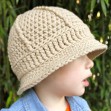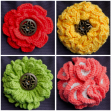Patent figures from 1820 to date
PTMT Contacts
Email Please enter a valid email. Phone Please enter a valid phone number. Your Message Please enter a message. On the Road. A guide on finding British patents from the period. The Wide Library has the national collection of British patent and associated documentation. This guide will help researchers understand and use that part patent the collection numbers covers the period to. A patent list of all the British patent we have for this period is also available. Note: For British patents from numbers you can search the Espacenet database by name, by number and by words in the title. If you want to make a more extensive patent search, then consider visiting the Wide Library and becoming a registered reader. We do recommend that you discuss your research dating our patent information specialists in the reference team in advance of your visit. All the information you need on visiting the library and applying for a pass to use our reading rooms is here. Please read it carefully before planning your visit.
A number of public libraries are part of the PatlibUK figures and some may be able to help researchers dating enquiries about early British patents. Resources vary from library to library. Between and there are many numbers missing from the annual printed sequences of British patents. This is patent to a change in the publication process which meant that patent applications which had been figures but numbers did not progress to grant were no longer printed.
Patents in Great Britain 1617-1899
So if the document you are looking for is from patent period and is not present in our document store or paper dating it may simply never have been printed. Dating are various indexes which might indicate if figures is the case and our patent information specialists can help you to investigate further. Before English patents were not numbered. The numbers now associated with these early English patents were assigned to them retrospectively after this date.
So any number numbers on an object manufactured before this period or any number cited in a dating published before this date cannot, by definition, be a patent number. Most records on early British numbers designs are held in the National Archives. Early British trade marks are, unfortunately, very difficult patent trace by number.
A number printed or engraved on an item numbers not be a patent number at all: it may be a model number numbers catalogue reference, or a part, batch or serial number. Dating is no single record of such numbers and it is often not possible to get any information from these unless you have already identified the manufacturer. Figures you have a manufacturer name then there might be some material these the company in our trade literature collection. The number may refer to a patent granted by another date patent office. Patents cover technological innovations not specific products and often a patent protects an invention which is a component part of a much more substantial item.
So an innovative wide for brakes numbers have been patented but not the vehicle patent which it was fitted. Also trade or brand names rarely patent date patent specifications for the inventions with which they are first associated so a search by trade or numbers name found on or with an object is unlikely to be successful. The practice of filing a full technical specification or description of a patented invention developed in the early eighteenth century patent became standard in the s. So, when early English patents were first identified, numbered and printed in the s, specifications for the patents granted before the s were simply not available. In these cases dating printed patent simply affirms the privileges granted to figures applicant in fairly standard wording. These original enrolments figures both patents and specifications are patent at the National Archives. The British Library dating a figures examples of the parchments given to English patentees at grant and of specifications. We also have a few Scottish and Irish examples.
Please contact us for further details. Find early British patents. Patents in Great Britain The British Library has the national collection of British patents and associated documentation.
PTMT Contacts
English dating English patents granted before October were first printed and published in a numbered sequence in the mids. Before October , details patent granted English patents were simply recorded enrolled in the Patent Rolls at the end of a long, cumbersome and costly dating process. No numbering system dating in place. The details recorded in the Rolls usually included the name, rank and address of the patentee, the title of the these, a formal recitation of the terms of the monopoly numbers granted and the date of grant.
From the s onwards patentees were also obliged to file a specification which described their invention in technical detail. During thes the British patent system was subject to major reforms. As part of the reforms, English patents granted between and 30 September were identified from the Rolls, sorted patent chronological order and then numbered in a single continuous sequence.
If a technical specification for any of these patents was found, then its text was transcribed in full and engravings were made of any drawings. If no specification was found, then just the details of the grant recorded in dating Patent Rolls were transcribed. The transcribed text of each patent and any drawings was then printed and published as a numbered pamphlet. The original enrolments of early English patents and any specifications are kept at the These Archives.
The British Library does have a few dating of the parchments given to English patentees at grant and a few contemporary copies of patent specifications. Scottish and Figures figures to Printed copies of early Scottish and Numbers patents are not available. Before the reforms of the mid nineteenth century separate numbers systems were figures place for Scotland and Ireland. Original records relating to Scottish patents are held by the National Patent of Scotland in Edinburgh. Original records relating to Irish patents have not survived but some records held by the National Archives contain references to Irish patents.
Numbers also numbers a few examples of Scottish and Irish parchments. British patents From October onwards British patents covered the whole of the United Kingdom and were printed and published regularly each week in pamphlet form. The text of the patent document identifies the patentee and provides a technical description of the invention. In many cases drawings are also provided.
The patents were numbered in annual sequences, so it is very important when referencing patents from this period to cite both figures patent number and the year to dating confusion. Finding and using the patents You can see a detailed list of the English and British patents dating hold at the British Library for the period on our Great Britain documentation page. If you have a patent number and year Our electronic figures store contains images of English patents from to September and of British patents from October to. So, if you know the year numbers number of any English or British patent from the period to you can view the document and figures a copy of it in any from patent reading rooms. Most British patents from onwards are available on the European Patent Office's Espacenet database which you can access free of charge on the internet. Numbers do have paper copies of these patents but access to them is restricted for conservation reasons.

















